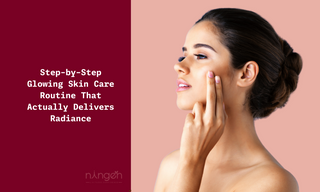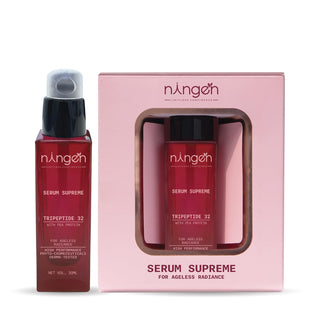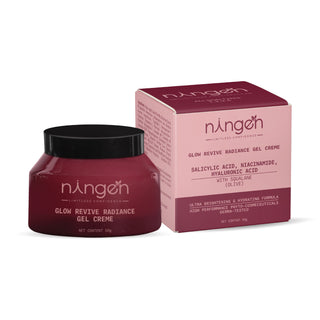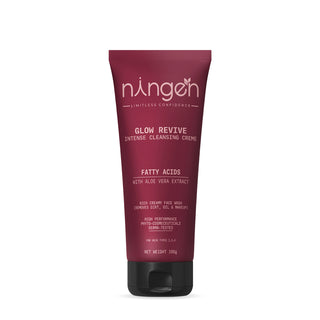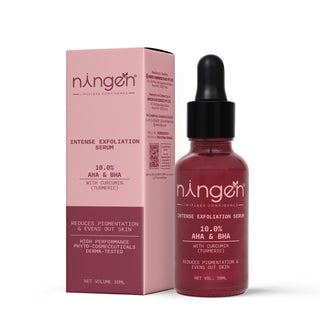Last Updated: July 2025
Picture this: You wake up, look in the mirror, and your skin literally glows back at you – that natural, healthy radiance our grandmothers called "chamakdar twacha." No filter needed, no strategic lighting – just pure, natural luminosity that makes people ask, "Kya raaz hai tumhara?"
If you're tired of dull, lackluster skin battling city pollution, high humidity, or unpredictable weather, you're in the right place. Forget overnight miracles or 20-step routines that gather dust. Real radiance comes from a targeted, sustainable routine that works with your skin’s biology.
Ready to unlock your healthiest, most luminous complexion? Buckle up, buttercup. This comprehensive step-by-step glowing skin care routine is designed for tropical and subtropical climates, melanin-rich skin types, and urban lifestyle challenges – it's your roadmap to achieving that coveted "glass skin" look while honoring traditional beauty wisdom.
TL;DR:
-
Morning routine: Gentle cleanser → Vitamin C serum → Lightweight moisturizer → SPF 30+ (non-negotiable!)
-
Evening routine: Double cleanse → Exfoliate (2-3x/week) → Hydrating serum → Night cream/moisturizer
-
Weekly boosters: DIY face mask, facial massage with oils, adequate sleep
-
Key ingredients: Vitamin C, hyaluronic acid, niacinamide, gentle AHA, ceramides
-
Climate considerations: Humidity-friendly products, pollution protection, seasonal adjustments
-
Timeline: Expect noticeable results in 4-6 weeks with consistent use
In This Guide;
Why Your Current Routine Isn't Working?
The Science Behind Glowing Skin
Your Morning Glowing Skin Care Routine
Your Evening Glowing Skin Care Routine
Why This Routine Actually Works?
Why Your Current Routine Isn't Working?
1. You're Using the Wrong Products for Your Skin Type/Concerns:
Mismatched Skin Type: Are you using products formulated for dry skin when you're oily (causing congestion), or heavy creams when you're oily/acne-prone (causing breakouts)? Conversely, using harsh products for oily skin when you're dry/sensitive can wreck your barrier.
Targeting the Wrong Concerns: Is your routine focused on anti-aging when your main issue is acne? Or heavy on brightening when you need hydration? Products need to address your primary goals.
Ignoring Sensitivities: Do you have known sensitivities (fragrance, essential oils, certain preservatives, lanolin, etc.)? Even "good" ingredients can be irritating if your skin dislikes them.
2. Product Incompatibility or Overuse of Actives:
Layering Conflicts: Certain ingredients cancel each other out or cause irritation when combined. Classic examples: Vitamin C + Niacinamide (can be destabilizing for some), Retinol + AHA/BHA (highly irritating together), Benzoyl Peroxide + Retinol (deactivates retinol). Are you mixing incompatible actives?
Over-Exfoliation: This is a HUGE culprit. Using too many acids (AHA, BHA, PHA) or physical scrubs too frequently, or combining multiple exfoliating products, destroys your skin barrier. Signs: redness, stinging, tightness, increased sensitivity, sudden breakouts, shiny yet flaky skin.
"Active Overload": Stacking multiple potent actives (e.g., retinoid + vitamin C + acid serum daily) without proper acclimation or barrier support overwhelms the skin.
3. Compromised Skin Barrier:
The Foundation is Damaged: If your skin barrier (the outermost protective layer) is impaired, nothing will work well and everything will irritate. Causes: over-exfoliation, harsh cleansers, over-washing, environmental stress, certain actives used incorrectly.
Symptoms: Stinging with gentle products, persistent redness, dehydration (skin feels tight but may look oily), increased sensitivity, flakiness, rough texture, breakouts that won't heal.
Consequence: A damaged barrier prevents active ingredients from penetrating effectively and makes skin reactive, meaning even beneficial products seem ineffective or irritating.
4. Incorrect Application/Order/Quantity:
Wrong Order: Skincare penetrates best in order of consistency (thinnest to thickest: cleanse -> tone (optional) -> serum -> treatment -> eye cream -> moisturizer -> SPF (AM)). Applying thick creams before serums blocks the serums.
Incorrect Amounts: Using too little product (especially sunscreen or retinoids) reduces efficacy. Using too much wastes product and can cause irritation or pilling.
Rushing: Not waiting long enough (especially 15-30 mins) after applying water-based products (like vitamin C or AHAs) before applying oil-based products (like moisturizer or sunscreen) can dilute or interfere with efficacy.
Application Technique: Rubbing too harshly (especially around eyes), not patting in serums properly, or applying actives to damp skin (increasing penetration and potential irritation).
5. Lack of Consistency or Patience:
Inconsistent Use: Skipping days, especially with actives like retinoids or acne treatments, significantly reduces results. Consistency is key.
Impatience: Most skincare (especially for concerns like hyperpigmentation, fine lines, acne scars, or building tolerance to retinoids) takes weeks to months to show visible results. Are you giving products enough time (typically 6-12 weeks for actives)?
Constantly Switching: Trying a product for only 1-2 weeks before abandoning it doesn't give it a fair chance. Jumping ship too quickly prevents you from seeing potential results.
6. Missing Core Essentials or Overcomplicating:
Skipping Sunscreen (AM): This is non-negotiable. UV rays damage collagen, worsen hyperpigmentation, increase cancer risk, and actively undo the reparative work of other products (especially retinoids, AHAs, vitamin C). No routine works optimally without daily SPF 30+.
Neglecting Moisturizer: Even oily skin needs hydration. Skipping moisturizer can signal the skin to produce more oil and worsen barrier function. Hydration is crucial for plumpness and barrier health.
Harsh Cleansing: Using stripping cleansers (squeaky-clean feeling) damages the barrier. Opt for gentle, pH-balanced cleansers.
Too Many Products: A 10-step routine isn't necessary and increases the risk of irritation, conflicts, and barrier damage. Simplify to cleanse, treat (1-2 key actives), moisturize, SPF.
7. Underlying Internal or Environmental Factors:
Diet/Hydration: High sugar/dairy intake can trigger acne in some. Chronic dehydration affects skin plumpness.
Hormones: Fluctuations (periods, PCOS, menopause) heavily impact oil production, acne, and sensitivity. Topicals may not fully control hormonal breakouts.
Stress: High stress increases cortisol, worsening acne, sensitivity, and impairing barrier repair.
Sleep: Poor sleep quality accelerates aging and impairs skin recovery.
Medications: Some drugs (like certain antidepressants, steroids, hormonal treatments) can cause breakouts or dryness.
Environment: Pollution, hard water, extreme weather (cold/dry, hot/humid) stress the skin.
Health Conditions: Conditions like rosacea, eczema, psoriasis, or fungal acne require specific treatments; general routines often fail.
8. Unrealistic Expectations:
Skincare cannot achieve "filter" perfection, erase deep wrinkles, completely remove large pores, or change your fundamental skin type (e.g., permanently turn oily skin to dry). It can significantly improve texture, tone, clarity, hydration, fine lines, and acne, but within biological limits.
The Science Behind Glowing Skin
Before diving into the routine, let's understand what "glowing skin" actually means. That coveted radiance happens when:
-
Your skin cells are healthy and well-hydrated
-
Light reflects evenly off your skin's surface
-
Blood circulation brings nutrients to your skin
-
Your skin barrier is strong and intact
Also read: How to know your skin type?
Your Morning Glowing Skin Care Routine
Step 1: Gentle Cleansing
Start with a mild, sulfate-free cleanser that won't strip your skin's natural oils, crucial in hot, humid weather. Look for:
-
Ceramides for barrier support
-
Glucoside for sensitive skin
-
Aloe vera for skin nourishment
Pro tip: Use room temperature water – the climate is already warm enough! Hot water can worsen pigmentation common in melanin-rich skin.
Step 2: Vitamin C Serum
This is essential for skin battling pollution daily. Vitamin C helps with:
-
Pollution protection (antioxidant shield)
-
Brightening dark spots and pigmentation
-
Collagen protection from UV damage
Start with 10-15% concentration. Apply 2-3 drops and pat gently. Wait 5 minutes before moisturizer.
Step 3: Lightweight Moisturizer
Choose a gel or water-based moisturizer:
-
Hyaluronic acid for hydration without heaviness
-
Niacinamide for oil control and pore refinement
-
Squalene for moisturization & nourishment

Step 4: Sunscreen (Absolutely Non-Negotiable!)
The tropical sun is intense year-round. Use SPF 30-50 with a PA+++ rating. Look for:
-
Zinc oxide or titanium dioxide for sensitive skin
-
Lightweight, non-greasy formulas for healthy skin
-
Broad-spectrum protection
Reapply every 2-3 hours, especially if you're outdoors or near windows.
Your Evening Glowing Skin Care Routine
Step 1: Double Cleanse
First cleanse: Oil-based cleanser or micellar water to remove sunscreen, pollution particles, or other oil-based skincare products
Second cleanse: Water-based hydrating cleanser for deep pore cleansing
This is crucial for skin exposed to daily pollution and dust in urban environments.
Step 2: Exfoliation (2-3x per week)
Tropical skin needs gentle exfoliation to prevent clogged pores from pollution:
-
AHA (glycolic or lactic acid) for surface renewal
-
BHA (salicylic acid) for oil-prone areas
-
Enzyme exfoliants for sensitive skin
Avoid over-exfoliation – this can damage skin cells and worsen pigmentation in melanin-rich skin.

Step 3: Treatment Serums (for normal skin)

Step 3: Eye Cream
Purpose: Hydrate and treat the delicate, thin skin around the eyes which lacks oil glands. Targets concerns like dryness, fine lines, puffiness, dark circles.
How: After serums, before moisturizer. Take a tiny amount (about half a pea-sized amount total for both eyes). Dot very gently along the orbital bone (under eye and above the cheekbone, not directly on the mobile eyelid unless specified). Using your ring finger (weakest finger), pat or press the product in gently – NO rubbing or pulling. Avoid getting too close to the lash line to prevent irritation.
Key Ingredients: Look for peptides, hyaluronic acid, caffeine (puffiness), vitamin C (brightening), ceramides, retinol (use specific eye-safe formulas).
Step 5: Night Moisturizer/cream
Purpose: Seal in all previous products, provide hydration, support the skin barrier, and deliver nourishing ingredients overnight.
Choose based on your local climate:
-
Coastal areas (humid): Gel-based with ceramides
-
Dry regions: Cream-based with natural oils
-
Mild climates: Lightweight lotion with peptides
The Weekly Glow Amplifiers:
Chemical Exfoliation (1-2x Week, PM ONLY):
-
-
Goal: Slough off dead, dulling surface cells.
-
The Glow Move: Use an AHA (like glycolic or lactic acid 5-10%) for surface brightening or a BHA (salicylic acid 1-2%) if you're oily/acne-prone. Apply after cleansing/toning, before serum. Start once a week.
-
Why It Works: Removes the literal barrier to radiance, allowing light to reflect better and serums to penetrate deeper. Crucial Step!
-
Pro Tip: NEVER use exfoliants on the same night as retinol! Alternate nights. Hydrate intensely afterwards.
-
Also read: Benefits of using circadian rhythm serum.
Why This Routine Actually Works (The Science Bit, Simplified):
-
Focuses on Barrier Health: A strong moisture barrier = plump, reflective skin that naturally glows. Compromise this, and nothing else works well.
-
Prioritizes Key Actives: Vitamin C, Hyaluronic acid, Retinoids, AHAs/BHAs – these are the proven heavy-hitters for brightness, renewal, and clarity.
-
Emphasizes Sun Protection: UV rays are the #1 cause of dullness, dark spots, and collagen breakdown. SPF is non-negotiable.
-
Consistency is Queen: Glow isn't a one-off; it's the result of daily, loving care.

Common Mistakes That Kill Your Glow
- Using products meant for temperate climates without considering hot, humid weather
- Over-washing face due to oil and pollution (stick to twice daily)
- Skipping sunscreen even during monsoons (UV rays penetrate clouds!)
- Using too many actives at once (melanin-rich skin can be sensitive)
- Ignoring seasonal changes (what works in winter won't work in summer)
- Not adjusting routine for your local climate conditions
- Expecting overnight results (give it 4-6 weeks minimum)
When to Expect Results
-
Week 1-2: Improved hydration and smoother texture
-
Week 3-4: Reduced dullness and more even skin tone
-
Week 5-8: Noticeable glow and improved skin clarity
-
3+ months: Significant improvement in overall skin health
Red Flags: When to See a Dermatologist
Contact a professional if you experience:
-
Persistent acne or breakouts
-
Unusual skin discoloration
-
Severe irritation or allergic reactions
-
Skin that doesn't improve after 8 weeks
The Bottom Line
Glowing skin isn't about magic or misery. It's about respecting your skin’s biology, protecting it fiercely, feeding it the right actives consistently, and giving it time to flourish. This routine is your blueprint. Master these steps, be patient, and watch that coveted, healthy-from-within radiance emerge. It’s not just skin-deep; it’s confidence-deep.
Go forth and glow, beautiful!
Share your glow journey below! What's your holy-grail radiance product?
Frequently Asked Questions
1. How long does it take to see results from a glowing skin care routine in tropical climate?
Melanin-rich skin typically shows improvements in 3-4 weeks due to faster cell turnover in warm, humid conditions. However, significant glow appears after 6-8 weeks of consistent use. Factors like pollution exposure, monsoon season, and individual skin type can affect timeline. Be patient and consistent!
2. Can I use vitamin C and retinol together in my routine for melanin-rich skin?
Yes, but with extra caution for melanin-rich skin which can be more sensitive. Use vitamin C in the morning (essential for pollution protection) and retinol at night. Start with lower concentrations (10-15% vitamin C, 0.25% retinol) and introduce gradually. Always use sunscreen!
3. What's the difference between a glowing skin routine for different climates?
Coastal areas (humid): Gel-based products, stronger oil control, antifungal ingredients during monsoons. Dry regions: Richer moisturizers in winter, strong pollution protection. Mild climates: Balanced approach with seasonal adjustments. Urban areas (humid + pollution): Double cleansing crucial, lightweight but effective products.
4. Are expensive international products necessary for tropical skin?
Absolutely not! Many local brands now offer excellent formulations at affordable prices. Brands like Minimalist, Plum, and Dot & Key provide effective ingredients. Focus on proven actives like vitamin C, niacinamide, and hyaluronic acid rather than brand names. Traditional ingredients like turmeric and neem are also highly effective.
5. How should I adjust my routine during Indian monsoons?
Switch to waterproof sunscreen, use antifungal ingredients like neem or tea tree, reduce exfoliation frequency, and opt for lighter, quick-absorbing products. Keep skin dry, use dehumidifying masks weekly, and don't skip sunscreen even on cloudy days – UV rays penetrate clouds!
6. Can I skip moisturizer if I have oily skin in Indian humidity?
Never! Indian climate can be deceiving – humidity doesn't mean your skin is hydrated. Choose gel-based, oil-free moisturizers with ingredients like hyaluronic acid and niacinamide. Skipping moisturizer can make your skin produce more oil and worsen breakouts.
7. What ingredients should Indian skin avoid?
Be cautious with high-concentration acids (start slow), excessive fragrance, and harsh sulfates. Indian skin can be sensitive to strong retinoids initially. Avoid alcohol-based toners which can worsen pigmentation. Always patch test, especially if you have sensitive Indian skin.
8. Does Indian diet affect skin glow?
Absolutely! Traditional Indian foods are excellent for skin: turmeric (anti-inflammatory), amla (vitamin C), ghee (healthy fats), curd (probiotics). Limit excess sugar, processed foods, and very spicy food if you're acne-prone. Stay hydrated with nimbu paani and coconut water.
9. How does pollution affect my skin routine?
Indian metro pollution requires double cleansing, antioxidant serums (vitamin C, E), and barrier repair ingredients. Use clay masks weekly to deep-clean pores. Micellar water is great for removing pollution particles. Consider air purifiers at home for better skin health.
10. When should I introduce anti-aging products for Indian skin?
Start antioxidants (vitamin C) in early 20s for pollution protection. Retinol can be introduced in mid-20s but start with lower concentrations (0.25%) as Indian skin can be sensitive. Sunscreen from teenage years is crucial. Prevention is key – Indian sun exposure accelerates aging. or twice per week.


